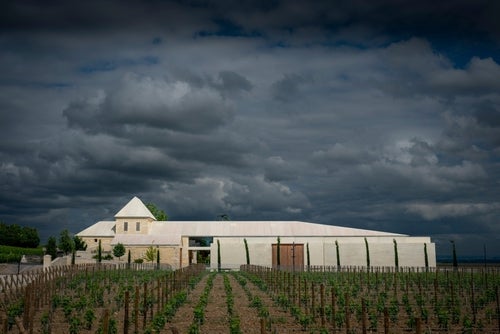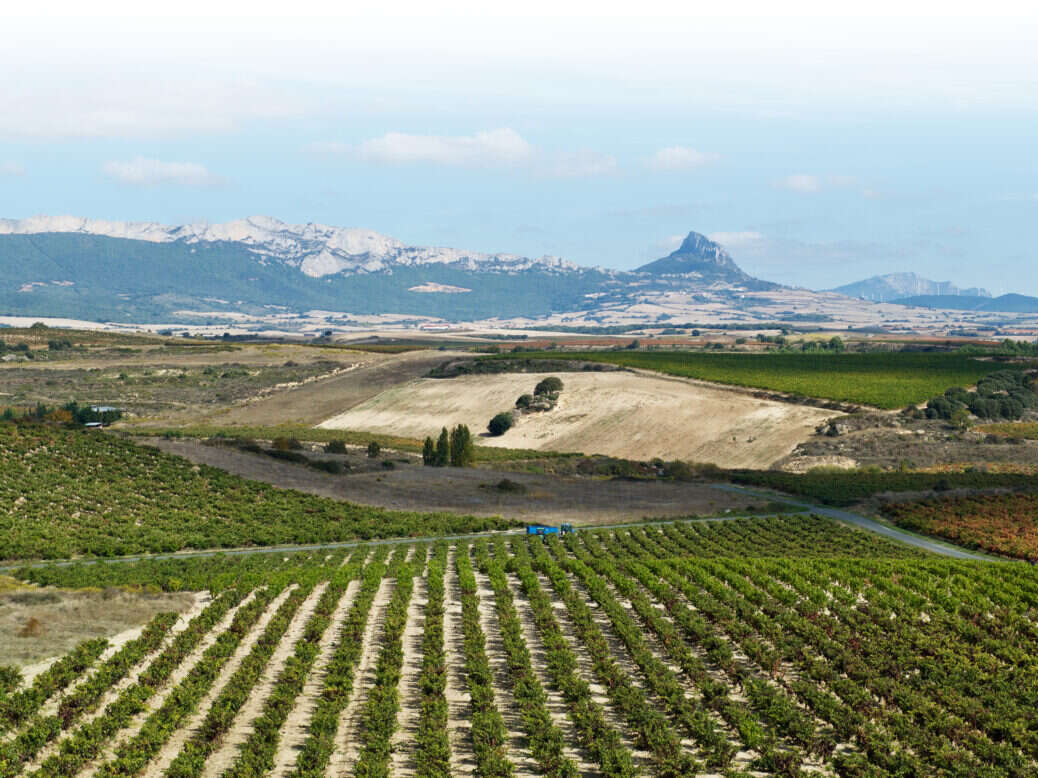
By the mid-2000s, Rioja Blanco seemed to be in terminal decline. Today it’s responsible for a sizeable proportion of Spain’s finest white wines. Tim Atkin MW tells the tale of an astonishing comeback, accompanied by his own photography.
Reading one’s own back catalog is generally a bad idea. (Did I really write that? What was I thinking?) But the cutting was there in a file, so I thought I’d take a look. I last penned a full article about Rioja’s white wines 16 years ago, and it was decidedly downbeat. It was not an unusual perspective. Even the sunniest optimist would have conceded that the category was in steady and seemingly unstoppable decline.
It was not always so. Until the late 18th century and possibly later, Rioja’s vineyards contained a very sizable proportion of white grapes that may even have been in the majority at one point. It was not until phylloxera arrived in Bordeaux in 1866, prompting the merchants of the Gironde to look for an alternative source of vino, that the red boom began in earnest, and even then, these grapes were frequently used to make rosés or lighter reds called Ojo de Gallo by blending them with co-planted white varieties. Notwithstanding the increase in red-wine sales, certain whites enjoyed an international following a century or more ago—most notably CVNE’s Monopole, Bodegas Franco-Españolas’s sweet Diamante, and Bodegas Bilbaínas’s famous sparkling wine, Champan Lumen.
As recently as 1985, white grapes still accounted for nearly one quarter of the region’s 38,817ha (95,920 acres). But by the time I wrote that piece in 2006 the figure had hit 7 percent and was still tumbling. Marqués de Murrieta had just stopped making its regular Gran Reserva Blanco—consumers kept bringing it back to the shops complaining the wine was oxidized—and even Mercedes López de Heredia, the person who still crafts some of the country’s greatest and most traditional whites at her family’s bodega in Haro, admitted that she was starting to feel like “the last of the Mohicans.”
I loved the Viña Tondonia reservas and gran reservas—and still do—but I, too, was in a minority. I have a copy of the Guía Peñín from 2003, and it wasn’t complimentary about the 1987 and 1981 releases. Both scored 80+ out of 100. White Rioja—especially mature, barrel- and bottle-aged white Rioja—was becoming profoundly unfashionable. There was a handful of very good producers—Allende, Bodegas de la Marquesa, Bodegas Valdemar, Palacios Remondo, Remelluri, and Marqués de Murrieta for that matter, which was still making Capellanía, as well as Castillo Ygay—but they seemed to be struggling against a surging tide of Tempranillo.
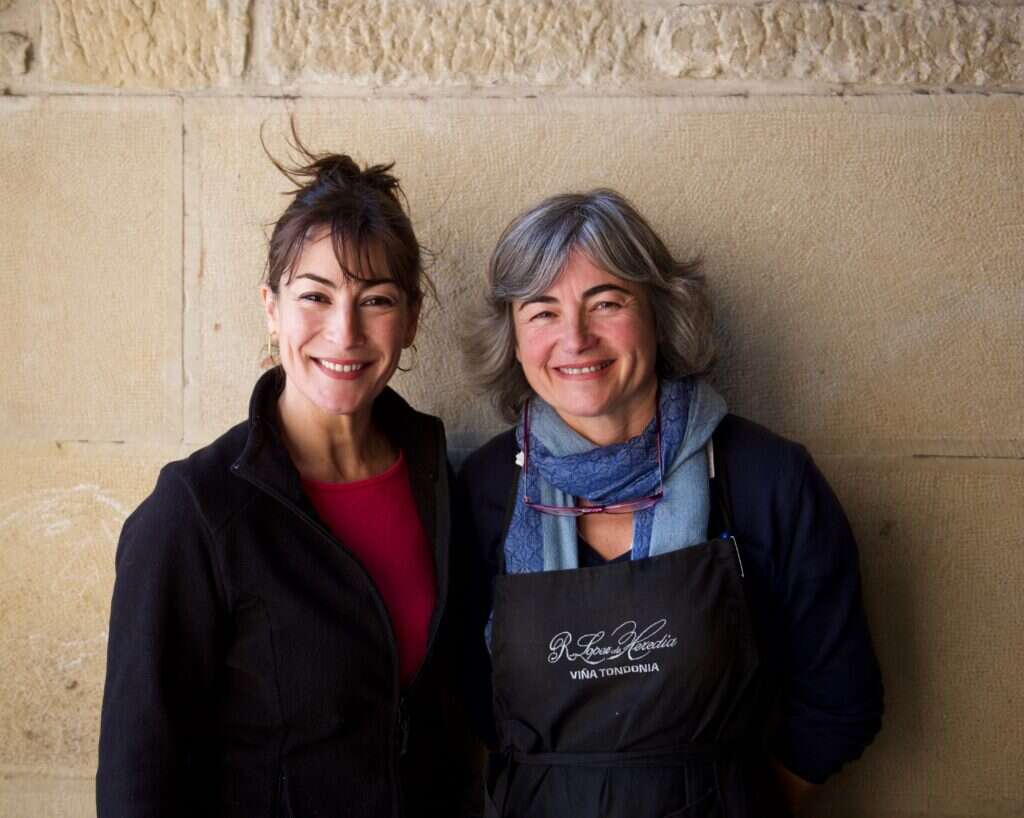
But guess what: Time has confounded my gloomy predictions. Fast-forward to 2022, and white Rioja has not only survived but prospered. How it got there, where it is now, and its exciting future are the subjects of this new piece. I visit Rioja at least once every year, and for the past decade I’ve been thrilled by what I’ve tasted. The region is currently producing a good proportion of Spain’s best whites—more diverse and every bit as good as what’s coming out of Catalonia, Rías Baixas, Rueda, and Valdeorras.
White Rioja: A broad palette of varieties
Before we dive into Rioja’s history, wine styles, and terroirs, let’s begin with a few relevant statistics. Over the past decade, white plantings have been growing again, pretty much year on year, to their current 6,021ha (14,878 acres), equivalent to 9.03 percent of the region’s 66,653ha (164,703 acres) under vine. These days, Rioja’s winemakers have a broad palette of varieties to choose from. In order of importance, these are Viura (6.14%), Tempranillo Blanco (1.14%), Verdejo (0.48%), Sauvignon Blanc (0.37%), Garnacha Blanca (0.36%), Chardonnay (0.23%), Malvasía de Rioja (0.2%), Maturana Blanca (0.06%), Turruntés (0.01%) and “other whites” (0.05%).
These other whites are tolerated rather than encouraged by Rioja’s Consejo Regulador and include varieties found in old vineyards, such as Calagraño, Clairette Blanche, Jaén Blanco, Mazuelo Blanco, Moscatel de Alejandría, Palomino, Pavés, Rojal, and Xarel.lo, as well as more recently imported Gewürztraminer, Marsanne, Roussanne, and Viognier. You see what I mean about diversity.
Some of these grapes are more traditional than others, but things are also a bit more complex than they seem. In 2008, the region decided to spice things up a bit by allowing plantings of six “new” varieties—the internationally popular Chardonnay, Sauvignon Blanc, and Verdejo, and the rediscovered local grapes Maturana Blanca, Tempranillo Blanco, and Turruntés. And the complexity? Well, when Chardonnay, Sauvignon Blanc, and Verdejo were added to the list, there was a degree of local opposition. After all, does the world need another Chardonnay?
And yet the fascinating work being done by Rubén Jiménez, director of viticulture at Luis Cañas, suggests that Verdejo, at least, has been in Rioja for more than a century. Jiménez and his team have been rediscovering and recuperating old plants of more than 70 varieties, around30 of which are unknown. “Phylloxera was a disaster when it was found here in 1899,” he says, “so people planted a bit of everything to see what worked. Those are the grapes we’re studying, and they include Verdejo.”
The rediscovered trio are more interesting. Juan Carlos Sancha of Bodegas Juan Carlos Sancha played a major role in their recuperation at the University of Rioja. He says, “It’s better to reclaim historical varieties that have evolved in the soils and climate of Rioja than to import foreign ones.” Tempranillo Blanco is the youngest of them, since it’s a mutation of red Tempranillo discovered in a vineyard in Murillo de Río Leza as recently as 1988, but it has gone on to enjoy impressive success, at least in terms of plantings. Good yields make it particularly popular with growers, especially in the mechanized, irrigated flatlands of the Rioja Oriental, as does its relationship with Spain’s most famous red grape.
Turruntés is the same variety as Albillo Mayor, which is one of the parents of Tempranillo with red Benedicto. As such, it has been in Rioja—as well as in Ribera del Duero, where it is the mainstay of the area’s newly anointed denominación de origen whites—for centuries. For now, it’s pretty rare, with only one producer making a varietal iteration. Also well established, and by far the best Riojan variety in terms of quality, is Maturana Blanca. According to Pedro Balda’s indispensable book Variedades Minoritarias de Vid en La Rioja, the grape was already planted in Rioja by 1622, when it was known locally as Rivadavia in the subregion of Najera. The only drawback with Maturana Blanca is small bunches, which explains why it isn’t more widely planted today.
Rioja’s three “historic” grape varieties—Garnacha Blanca, Malvasía de Rioja, and Viura—were all authorized when the Consejo Regulador was founded in 1925. The first two were more widely planted before phylloxera, according to Jancis Robinson MW’s Wine Grapes, but it was Viura—probably imported from Catalonia, where it is known as Macabeo—that was to become the dominant white grape in the 20th century.
Once again, this was as much due to good yields as innate quality. Garnacha Blanca, like Garnacha Roja and Garnacha Peluda, is a mutation of red Garnacha and may well be an old variety in Rioja. The absence of reliable historical data, not to mention a degree of confusion in the vineyard, makes it difficult to know. The same confusion applies to Malvasía de Rioja, which is really Alarije. “Growers had a tendency to call all sorts of white grapes Malvasía,” explains Pedro Balda, “especially if they didn’t know what they were. There are nine different varieties called Malvasía in Spain, and they have nothing whatsoever in common.”
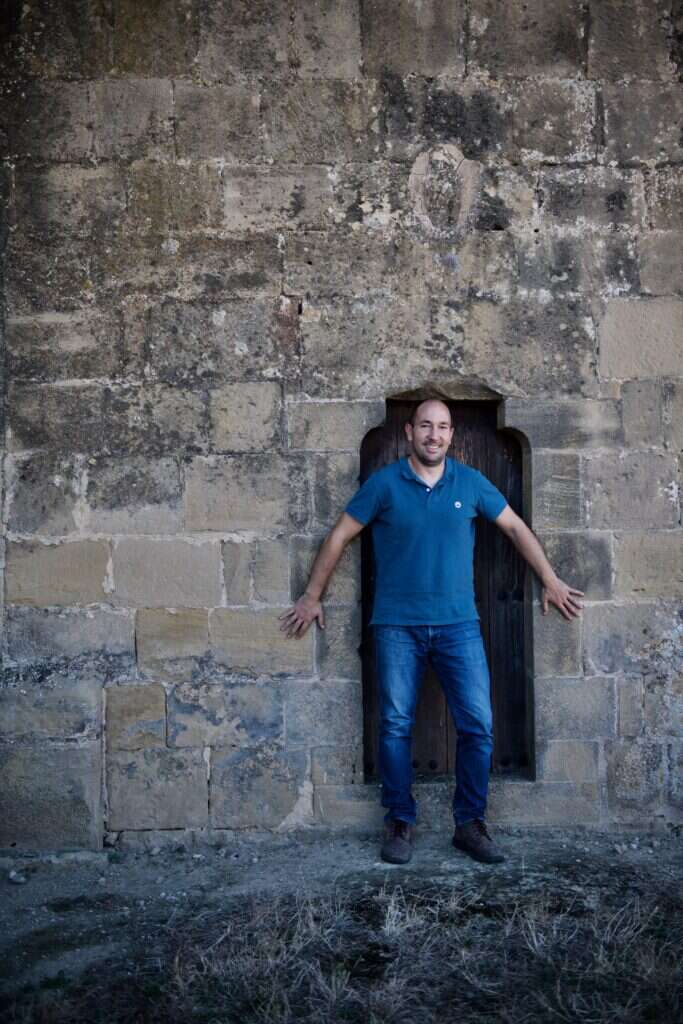
For all that, a lot of poor white wine was made in Rioja before the 1970s. The region was not alone in that respect. Deep color, oxidation, and a rancio, Sherry-like note were often considered signs of good quality. Things changed for the better in the early 1970s, when Enrique Forner of Marqués de Cáceres introduced temperature-controlled fermentation in stainless-steel tanks, making wines that were crisp, aromatic, and easy to enjoy young. Forner launched a new style of Rioja, whose descendants are still successful today. I don’t have the precise figures, but most of the region’s commercial whites are produced in this way. They are pleasant, fruity, and mostly forgettable, but there’s no denying how revolutionary the development was in its time.
Comparatively neutral and increasingly widely available, Viura was the grape of choice for this approachable, unwooded style. Sensing an opportunity, perhaps, the Consejo encouraged growers to plant white varieties, offering a grantof five pesetas per vine in 1974. Sure enough, by 1985 plantings of white grapes had hit 9,094ha (22,472 acres), with Viura driving the surge. But then things started to go into reverse gear. Was that new style too neutral? Were reds more profitable and in greater demand? Were carbonic maceration styles, which often include 15 percent white grapes, on the slide? Were better whites available from other regions? Were plantings in Rioja too extensive?
It was probably a combination of factors, but by 2000 the area under vine had fallen back to 7,339ha (18,135 acres), partly because of a ban on new plantings of white grapes in 1992. The prohibition was lifted in 2003 at the behest of the important cooperative sector, but it made no difference. By 2012, Rioja had only 3,764ha (9,301 acres) left. Since that nadir, there has been a revival in terms of plantings, as well as the diversity and complexity of the region’s whites. It began slowly enough yet is now a real, if unorganized movement.
Fertile middle ground
The statistics may indicate otherwise, but perhaps the tide had begun to turn a decade or so earlier, when Telmo Rodríguez made his first white wine at Remelluri in 1994. Strictly speaking, this ten-variety blend, which includes grapes as diverse as Chardonnay, Marsanne, Moscatel de Alejandría, Petit Courbu, Roussanne, Sauvignon Blanc, and Viognier, as well as more local Garnacha Blanca, Malvasía de Rioja, and Turruntés, is illegal, but the authorities seem to tolerate it—possibly because it’s so good.
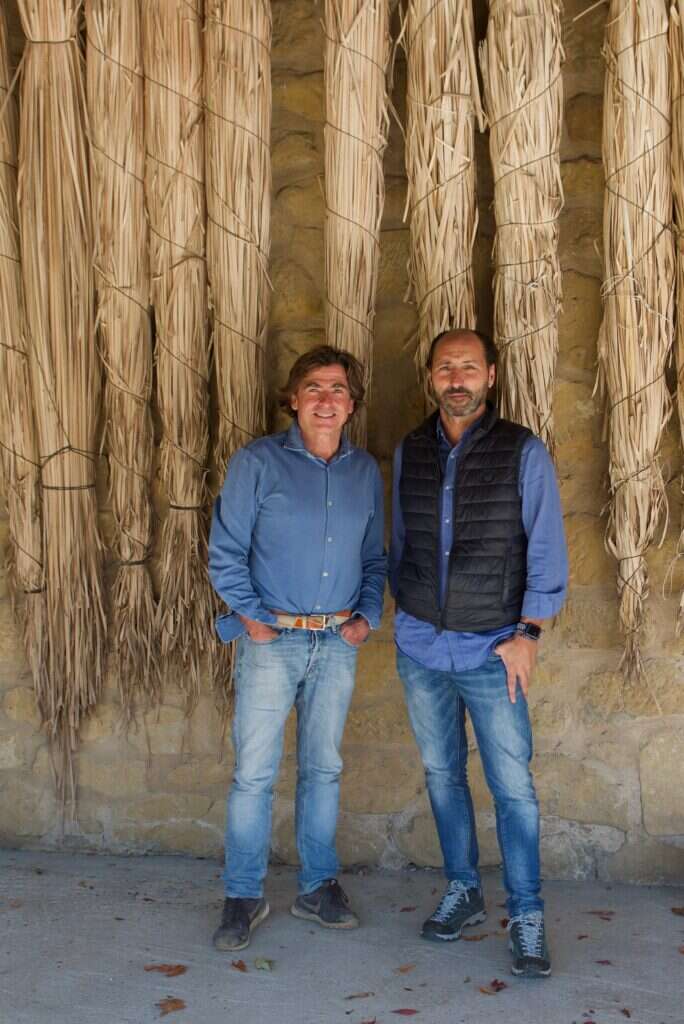
Rodríguez has never been afraid to push boundaries, and I think he was the first person to pursue a third way between the traditional style (both good and bad) and the stainless-steel-fermented one. This was the fertile ground in which many of Rioja’s best whites have flourished since.
There were other reasons for the renaissance. First, a new generation of winemakers, both local and from overseas, has taken whites more seriously. They have employed better viticulture, previously undervalued or underutilized old-vine parcels, different fermentation and aging techniques, and diverse blends of grapes, as well as single varieties, to produce world-class bottlings.
Second, they have had a greater and more inspiring range of varieties to choose from since 2008. Third, Viura from old vines has overcome its poor reputation, at least in the best sites. And last, the development of new white-wine vineyards in areas that, in the days when the climate was substantially cooler, were considered marginal.
Two key figures in white-wine circles are Abel Mendoza and Maite Fernández. To sit at the couple’s kitchen table in San Vicente de la Sonsierra, discussing and tasting the region’s white grapes, is to attend an informal and frequently hilarious masterclass. Vintage conditions permitting, they produce individual bottlings of Garnacha Blanca, Malvasía de Rioja, Tempranillo, Turruntés (they label it as Torrontés), and Viura, as well as 5V, which combines the quintet. “They all have their strong points,” says Mendoza, “but when you taste what they do together, you notice the complexity.”
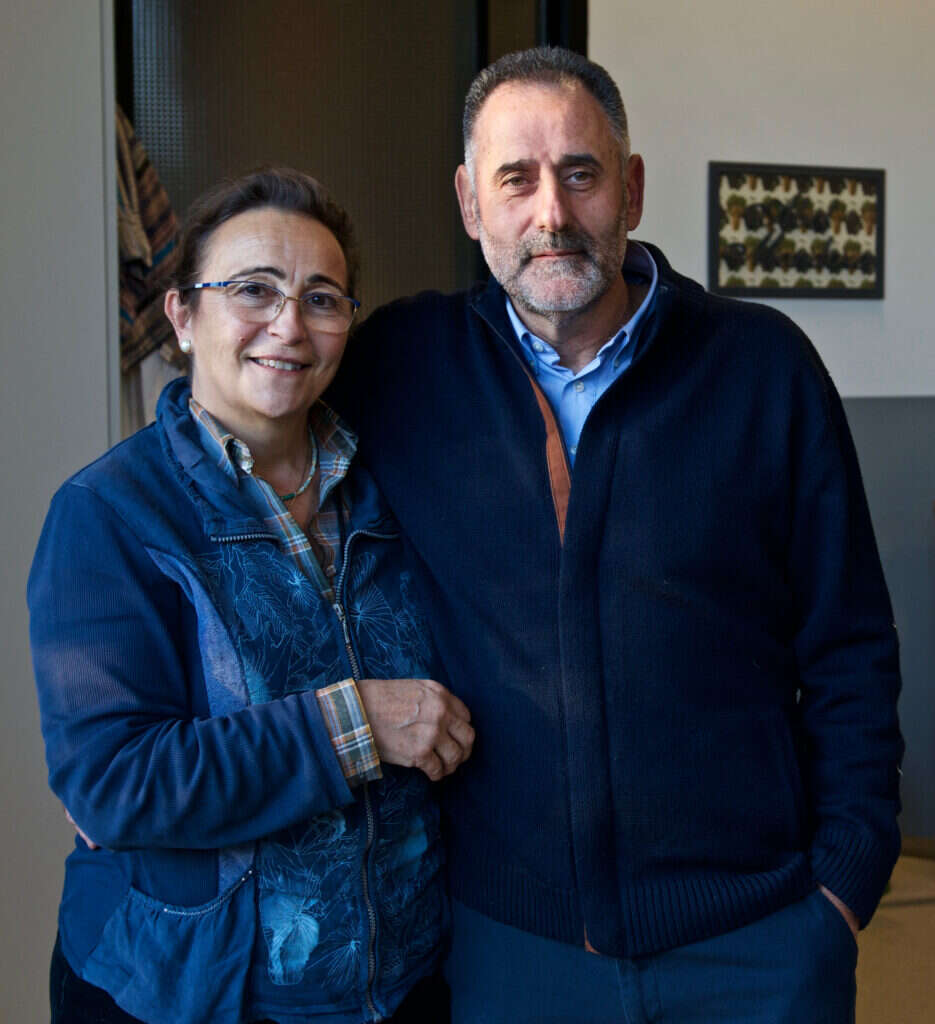
The Mendozas—in common with Miguel Ángel de Gregorio of Finca Allende, Álvaro Palacios of Palacios Remondo, Telmo Rodríguez, Miguel Ángel Rodríguez of Vinícola Real, Carlos San Pedro of Pujanza, Juan Carlos Sancha, Óscar Tobía, Luis Valentín of Valenciso, and former CVNE winemaker Basilio Izquierdo—have helped inspire the next generation of white-wine producers.
Younger members of this new wave include Frenchman Tom Puyaubert (Bodegas Exopto), Australian Bryan MacRobert (MacRobert & Canals), and Spaniards Víctor Ausejo, Iñigo Berzal (Dominio de Berzal), Saúl Berzal (Gil Berzal), Oxer Bastegieta, Sandra Bravo (Sierra de Toloño), Miguel Eguíluz (Cupani), Carlos Fernández (Bodegas Tierra), Richi Fernández (Bodegas Abeica), David González (Gómez Cruzado), Eduardo Hernáiz (Hermanos Hernáiz), Miguel Merino Junior, Roberto Oliván (Tentenublo), Alberto Pedrajo (Bodegas 220 Cántaras), David Sampedro (Bodegas Bhilar), Javier San Pedro, Berta Valgañón, and Rafa Vivanco, who is also the region’s best sparkling-wine producer.
It’s very hard to generalize about such a diverse lineup of winemakers, but they all have an intense focus on their vineyards and a desire to express them in the bottle. In the winery, they often use larger, older oak containers or concrete vessels for fermentation and aging, eschewing the official crianza, reserva, and gran reserva categories, which only allow maturation in 228-liter barrels. American oak, which was almost obligatory in the classic white Riojas, is also rare.
Summarizing the many styles on offer these days is similarly tricky. There are plenty of varietal wines, with Viura accounting for the largest number. Fine expressions of Rioja’s most planted white grape are made by Abel Mendoza, Álvaro Palacios, Bodegas Valdemar, Cupani, CVNE, Finca Allende, Marqués de Murrieta, Pujanza, Remírez de Ganuza, Viña del Lentisco, and Vinícola Real. Less common but every bit as exciting are wines produced from other standalone varieties.
Apart from Abel Mendoza’s quartet, I would single out the Maturanas Blancas from Ijalba, Juan Carlos Sancha, and Nivarius; the Garnachas Blancas from Dominio de Berzal, Finca Allende, and Víctor Ausejo; the Tempranillo Blanco from Bodegas Bilbaínas; and the Malvasías de Rioja from Bodegas Amaren, Bodegas Exopto, and Bodegas Tierra. The last producer also makes a unique—and what Carlos Fernández calls “totally illegal”—Mazuelo Blanco. The spirit of Telmo Rodríguez is alive and well.
And yet for all the delights these wines offer, I think the majority of Rioja’s best whites—both traditional and more modern—are blends. The classic cuvée, if we may call it that, popularized by Bodegas de la Marquesa, López de Heredia, and Marqués de Murrieta, combines Viura with a splash of Malvasía de Rioja, but there are lots of other permutations, including Calagraño, Cariñena Blanca, Garnacha Blanca, Moscatel de Alejandría, Tempranillo Blanco, and Turruntés, as well as all the imported grapes that Telmo Rodríguez has in his high-altitude parcels tucked under the Sierra de Cantabria.
Apart from those three traditional bodegas, my list of the best producers would include Abel Mendoza, Basilio Izquierdo, Bodegas Bhilar, Castillo de Cuzcurrita, Finca Valpiedra, Gómez Cruzado, Juan Carlos Sancha, Miguel Merino, Orben, Ostatu, Remelluri, Remírez de Ganuza, Sierra de Cantabria, Sierra de Toloño, Valenciso, Viñedos El Pacto, Vivanco, and Vinícola Real.
In a much better place
As white wines grow in popularity and stature, so we are beginning to see the development of bespoke vineyards. In the past, white grapes were often co-planted with reds or confined to what are known as cabezadas in the highest, stoniest, and least fertile sites—but that is changing. Many of these are using altitude, aspect, and/or cooler mean temperatures to combat climate change and preserve acidity. Examples of the first tendency are Nivarius’s dramatic, north-facing plantings of Maturana Blanca at 2,725ft (830m) in Nalda, and Barón de Ley’s Finca Carbonera at 2,870ft (875m) in the Rioja Oriental, focused on Chardonnay and Sauvignon Blanc. David Sampedro of Bodegas Bhilar is preparing to go higher still in Kripan, where he is soon to plant 3.5ha (8.6 acres) at 2,950ft (900m). “I’m attempting to get authorization to try lots of different varieties on an experimental basis with the help of the regional Basque government,” he says, “including Rufete Blanco. We have to think outside the box.”
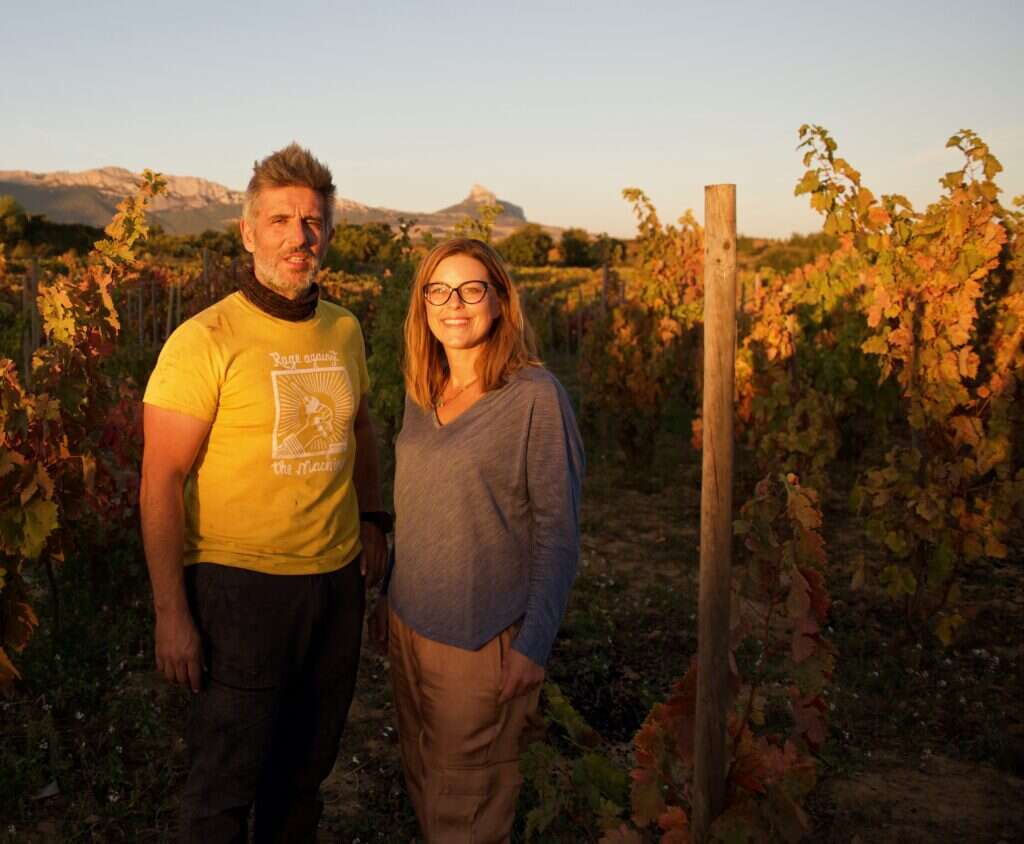
Examples of the second and third tendency can be found in areas that have benefited from the warmer growing seasons since 2001. I’d highlight four important ones, all of which cultivate white grapes: the northwest corner of the DOCa (Baños de Rioja, Cellorigo, Cuzcurrita, Fonzaleche, Sajazarra, and Salinillas de Buradón); the Alto Najerilla (Badarán, Baños de Río Tobía, Cañas, Cardenas, and Cordovín) in the southern part of the Rioja Alta close to the foothills of the Sistema Ibérico mountain range; the area between Entrena and Albelda, which spans the southern border between the Rioja Alta and Rioja Oriental and includes Albelda de Iregua, Nalda, Sojuela, and Sorzano; and, finally, the 1,970ft- (600m-) plus vineyards on the northern side of the River Ebro, especially in the Sonsierra villages of Ábalos, Labastida, Lanciego, Leza, Elvillar, Kripan, Peciña, Samaniego, and Rivas de Tereso.
Not so long ago, growing grapes in such areas was a white-knuckle proposition. “In Cañas, we used to struggle to get 10% potential alcohol,” says Miguel Ángel Rodríguez of Vinícola Real, “but now we’re picking at 14% alcohol with no botrytis. In the past, the weather used to turn in mid-September, and it rained a lot in October, so you often had to harvest before you were ready. Now the autumns are much warmer. It’s a totally different proposition.”
All in all, white Rioja is in a much better place than it was in 2006. The traditional style has survived, but it has been complemented by an excitingly heterogenous array of other wines. Rereading my old piece, I’m tempted to paraphrase Mark Twain’s response to a premature obituary: Reports of the death of Rioja’s white-wine category were mercifully exaggerated.


